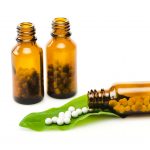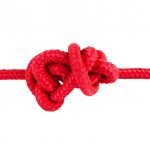Similar Thought
Joseph Kellerstein, DC, ND
In my previous NDNR article, published in the June 2018 issue, I described the case of Alfred, a 50-ish-year-old man. He had complained of angry outbursts that would always follow a welling-up of energy in his stomach. He also complained of hip pain that was worse walking on level surfaces but not inclines. He was looking toward a hip replacement in about a month.
I had prescribed Veratrum 30C once daily, which he reported 3 weeks later had put an end to the angry episodes but not affected his hip pain.
Two-Month Follow-up
Two months later, Alfred presented to my office. The hip surgery had been delayed.
“I’m still doing well with the anger,” he said. (To my utter amazement, I get his comment.) “Could that remedy be helping my hip? Even though I am scheduled for surgery in a couple of weeks, my hip pain is dramatically reduced. I can walk just fine!”
Now, a bit of a segue is needed…
George Dimitriadis
For several years now, I have been interested in the work of a wonderful homeopathic scholar, George Dimitriadis. George edited the TBR2 (Bönninghausen Repertory). He had also written several books, including Homoeopathic Diagnosis, as well as many important papers. For me, George has helped clarify many misconceptions regarding Hahnemann’s work and thought.
When I began to write the follow-up for this case, I asked George for his comments, especially surrounding my confusion regarding the inclusion of Veratrum in the following rubric (added to the repertory by Boericke):
Pain in the sacrum when walking on a level, not when sitting (in the morning).
George explained the meaning of the original rubric from Hahnemann. He clarified that it was not that walking on a level surface aggravated, but that “even walking on a level aggravates, whereas sitting ameliorates.”
In other words, walking – at all – is bad.
This is why Boenninghausen does not include it in his repertory.
Careful understanding of each recorded symptom is so necessary! Errors are propagated far too easily.
His Rubric Recommendations
George then commented on the case after reading my initial article.
“When I read the case, I understand the main symptom is one where the patient feels out of control – acting in a way which he fears will injure others around him (loved ones). It is not that he is worse in himself, nor that his symptoms are aggravated from becoming vexed – rather, that he gets episodes which come, like a gradual build-up, feel like a welling-up in the stomach (solar plexus?), and culminate in actions that are hurtful to those closest to him.”
His suggested selection of rubrics include:
794 Maliciousness
780 Apprehensiveness (physical)
382 Alimentary, risings
Please notice how the symptom, “There is a welling up of energy in my stomach. It moves upward until the episode happens,” has been “rubricated” using the 2 components of the symptom: 1) anxiety (apprehensiveness) felt in the body (780); and then 2) the upward movement of the perceived energy the patient describes, analogized by the “Alimentary, risings” (382), which could be used as well in a different context for reflux.
Additionally, George recommends use of the rubric, Ascending ameliorates, which does closely describe the actual case:
“It is worst when I walk on a level surface. Inclines are just fine.”
Repertorization
Applying these recommendations, the rep chart in TBR2 now looks a bit different (Figure 1).

The remedy remains Veratrum. However, the analysis is far more precise now. Even better is the feeling of having prescribed an appropriate remedy.
Closing Comments
My experience of the TBR2 has been very positive, including the elegant simplicity of use and the accuracy of remedy indication in terms of correlations with materia medica.
These days homeopathy seems to be in decline among naturopathic physicians, as well as in our colleges. This is a tragedy. No other medical method offers comparable precision, economy, and the ability to observe the Vital Force in action.
I would urge my colleagues to view George Dimitriadis’ available video lecture series at the DHANP site.
 Joseph Kellerstein, DC, ND, graduated as a chiropractor in 1980 and as an ND in 1984. He graduated with a specialty in homeopathy from the Canadian Academy for Homeopathy, and subsequently lectured there for 2 years. He also lectured in homeopathy for several years at CCNM; for 8 years at the Toronto School of Homeopathic Medicine; and for 2 years at the British Institute for Homeopathy. Dr Kellerstein’s mission is the exploration of natural medicine in a holistic context, especially homeopathy and facilitating the experience of healing in patients.
Joseph Kellerstein, DC, ND, graduated as a chiropractor in 1980 and as an ND in 1984. He graduated with a specialty in homeopathy from the Canadian Academy for Homeopathy, and subsequently lectured there for 2 years. He also lectured in homeopathy for several years at CCNM; for 8 years at the Toronto School of Homeopathic Medicine; and for 2 years at the British Institute for Homeopathy. Dr Kellerstein’s mission is the exploration of natural medicine in a holistic context, especially homeopathy and facilitating the experience of healing in patients.





